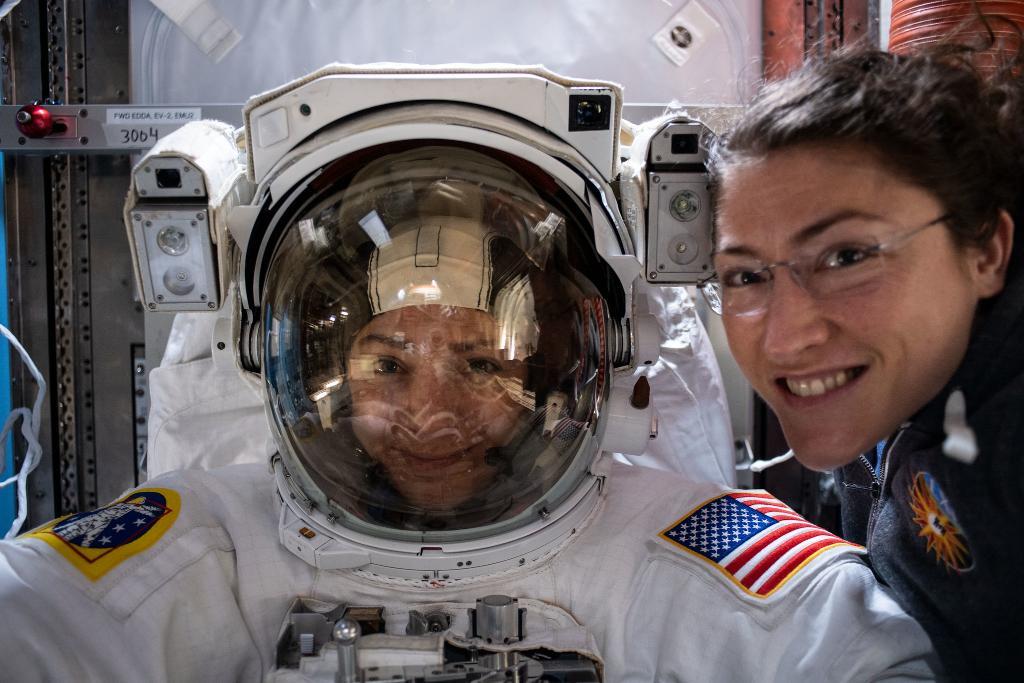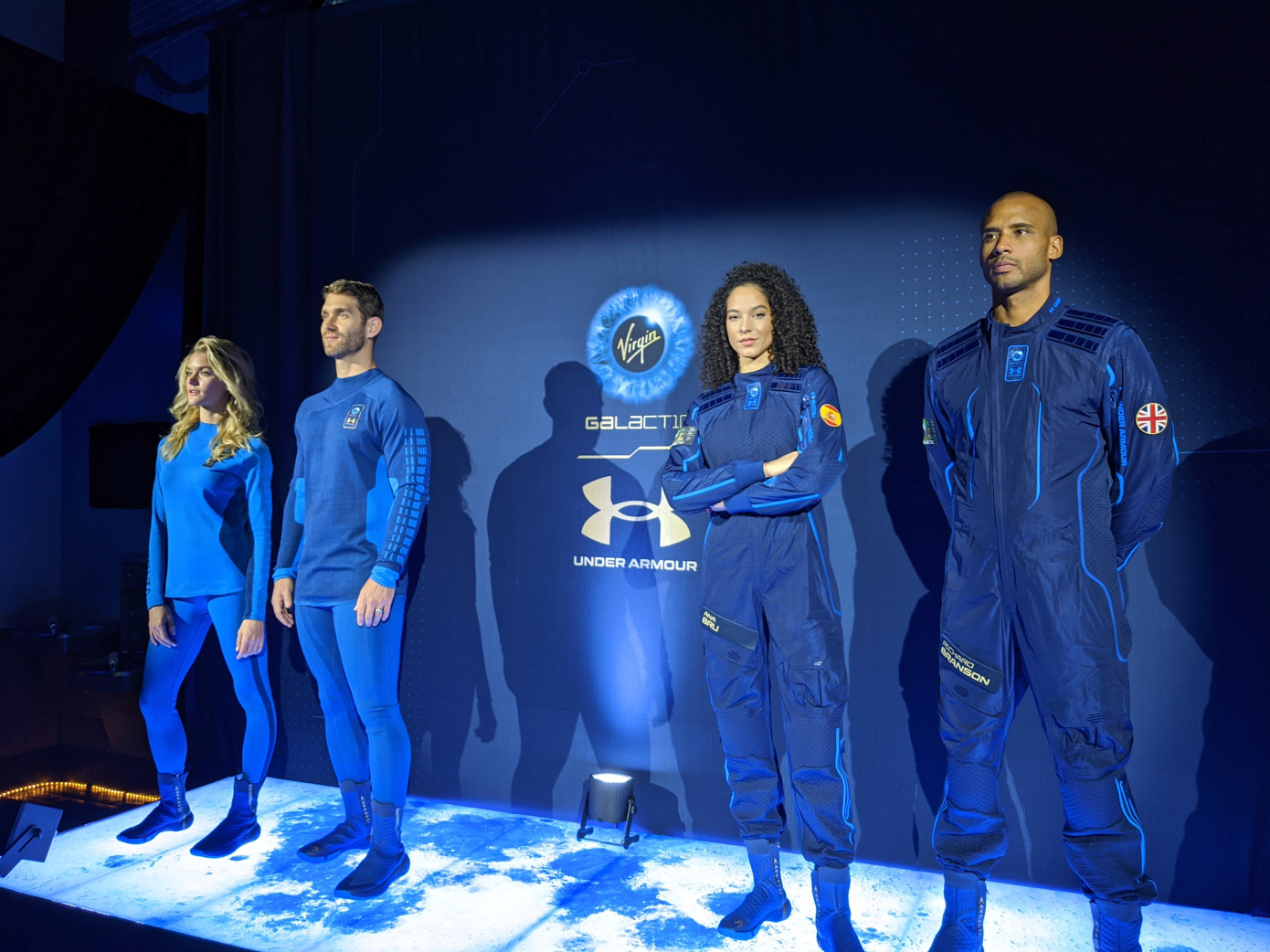Space is becoming a major area of startup and commercial investment, and so I’ve decided to start providing a weekly round-up of the biggest news in aerospace, space science and space-related technologies. Let me know if you appreciate this or have suggestions, and I’ll make sure it evolves as needed to be useful resource.
This week, there was an abundance of spacesuit news, and signs from multiple operators that there’s going to be an orbital traffic boom in the immediate future. Also, we’re heading into the annual International Astronautical Congress (IAC) this coming week, so expect a lot more news starting tomorrow.
1. NASA unveils its Artemis-generation spacesuitsNASA showed off a brand new generation of spacesuit, including the one that the first American woman and next American man to set foot on the Moon will don for that historic moment. The new Artemis suits are designed to scale from essentially the smallest to the largest possible adult human frame, which NASA touts as a way to make the astronaut program more accessible to a wider range of Americans. The agency should be going out of its way to fix that, because of what happened that led to item #2 this week.
For the first time, NASA is looking to outsource the full production of these Artemis-generation spacesuits (including the Orion survival suit, which was also revealed today and will be worn only during flight aboard the Orion capsule). To that end, it has put out a request for input from industry about their design and development ahead of setting up a proper RFP.
2. NASA astronauts Christina H. Koch and Jessica Meir complete historic first all-woman spacewalkNASA astronauts Christina H. Koch and Jessica Meir
As I alluded above, there was a very good reason that NASA really emphasized how inclusive its Artemis suit designs are: The agency had to cancel a first all-woman spacewalk earlier this year because it didn’t have the right amount of properly sized spacesuits on board the International Space Station. It sent one up in June, however, and that historic moment happened this past week, with Koch and Meir performing a roughly seven-hour spacewalk to repair a power controller.
3. SpaceX applies for permission to launch 30,000 more Starlink satellitesThat’s on top of the 12,000 it’s already had cleared, which makes for a total potential constellation size of 42,000. That’s about 8x the number of satellites currently in orbit, across all orbital zones. It’s a move that is definitely raising the ire of both industry and space researchers, because it’ll make it a lot more complicated to ensure orbital spacecraft avoid collisions, and it could potentially obscure the view of the stars from Earth. SpaceX says it has taken steps to ensure it can avoid both problems, but not everyone is convinced.
4. Swarm gets the ‘OK’ for its 150-satellite constellation Meanwhile, startup Swarm has been granted FCC approval to deploy its own, much-smaller constellation of 150 satellites. Swarm isn’t competing directly with SpaceX’s Starlink – it wants to provide low-bandwidth IoT connectivity. And while it isn’t looking to put up a huge volume of spacecraft, there was some concern that its toaster-sized satellites might be too small to track and present a risk that way.
Meanwhile, startup Swarm has been granted FCC approval to deploy its own, much-smaller constellation of 150 satellites. Swarm isn’t competing directly with SpaceX’s Starlink – it wants to provide low-bandwidth IoT connectivity. And while it isn’t looking to put up a huge volume of spacecraft, there was some concern that its toaster-sized satellites might be too small to track and present a risk that way.
New Zealand-born and lately U.S.-headquartered Rocket Lab was successful in launching its fifth Electron rocket this year. The startup’s success was more a proof point for its business model than its technology, however, since the payload that flew aboard this mission was actually one that wasn’t slated to go up until much later in the queue. Rocket Lab’s original client for this one had to drop out due to unfortunate circumstances, and Rocket Lab was able to get client Astro Digital an earlier ride. This kind of late-stage payload swap has not typically been a strength of the established commercial space launch industry.
6. Under Armour built some fancy tracksuits for space Richard Branson’s Virgin Galactic will begin ferrying wealthy paying tourists to the very edge of space next year, if all goes to plan, and now we know what they’ll be wearing when they do: Under Armour. The sportswear company and Branson’s space enterprise unveiled the new suits at a flashy special event featuring the first tourists who have reserved $250,000 tickets aboard Virgin Galactic’s atmosphere-skimming spacecraft.
Richard Branson’s Virgin Galactic will begin ferrying wealthy paying tourists to the very edge of space next year, if all goes to plan, and now we know what they’ll be wearing when they do: Under Armour. The sportswear company and Branson’s space enterprise unveiled the new suits at a flashy special event featuring the first tourists who have reserved $250,000 tickets aboard Virgin Galactic’s atmosphere-skimming spacecraft.
Lockheed Martin has been in the commercial space business since there has been a commercial space business to be in, and around a decade ago it established a corporate venture fund to make strategic bets on startups. I sat down with the fund’s GM and Executive Director J. Christopher Moran to talk about what the fund looks for in startups – and the industry giant is a lot more interested in early stage companies that you might have thought. Extra Crunch Subscription required.
